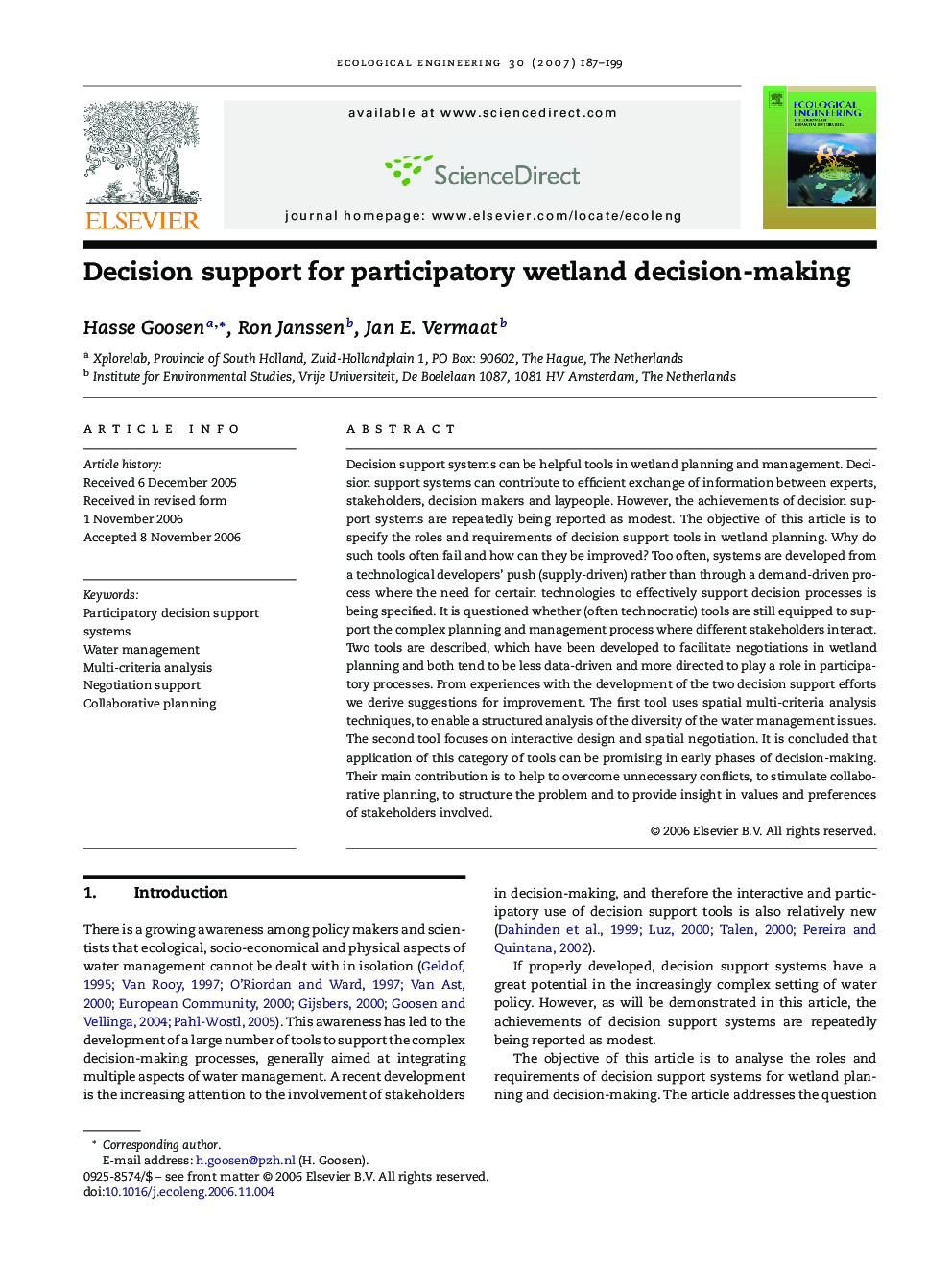| Article ID | Journal | Published Year | Pages | File Type |
|---|---|---|---|---|
| 4391179 | Ecological Engineering | 2007 | 13 Pages |
Abstract
Decision support systems can be helpful tools in wetland planning and management. Decision support systems can contribute to efficient exchange of information between experts, stakeholders, decision makers and laypeople. However, the achievements of decision support systems are repeatedly being reported as modest. The objective of this article is to specify the roles and requirements of decision support tools in wetland planning. Why do such tools often fail and how can they be improved? Too often, systems are developed from a technological developers' push (supply-driven) rather than through a demand-driven process where the need for certain technologies to effectively support decision processes is being specified. It is questioned whether (often technocratic) tools are still equipped to support the complex planning and management process where different stakeholders interact. Two tools are described, which have been developed to facilitate negotiations in wetland planning and both tend to be less data-driven and more directed to play a role in participatory processes. From experiences with the development of the two decision support efforts we derive suggestions for improvement. The first tool uses spatial multi-criteria analysis techniques, to enable a structured analysis of the diversity of the water management issues. The second tool focuses on interactive design and spatial negotiation. It is concluded that application of this category of tools can be promising in early phases of decision-making. Their main contribution is to help to overcome unnecessary conflicts, to stimulate collaborative planning, to structure the problem and to provide insight in values and preferences of stakeholders involved.
Related Topics
Life Sciences
Agricultural and Biological Sciences
Ecology, Evolution, Behavior and Systematics
Authors
Hasse Goosen, Ron Janssen, Jan E. Vermaat,
